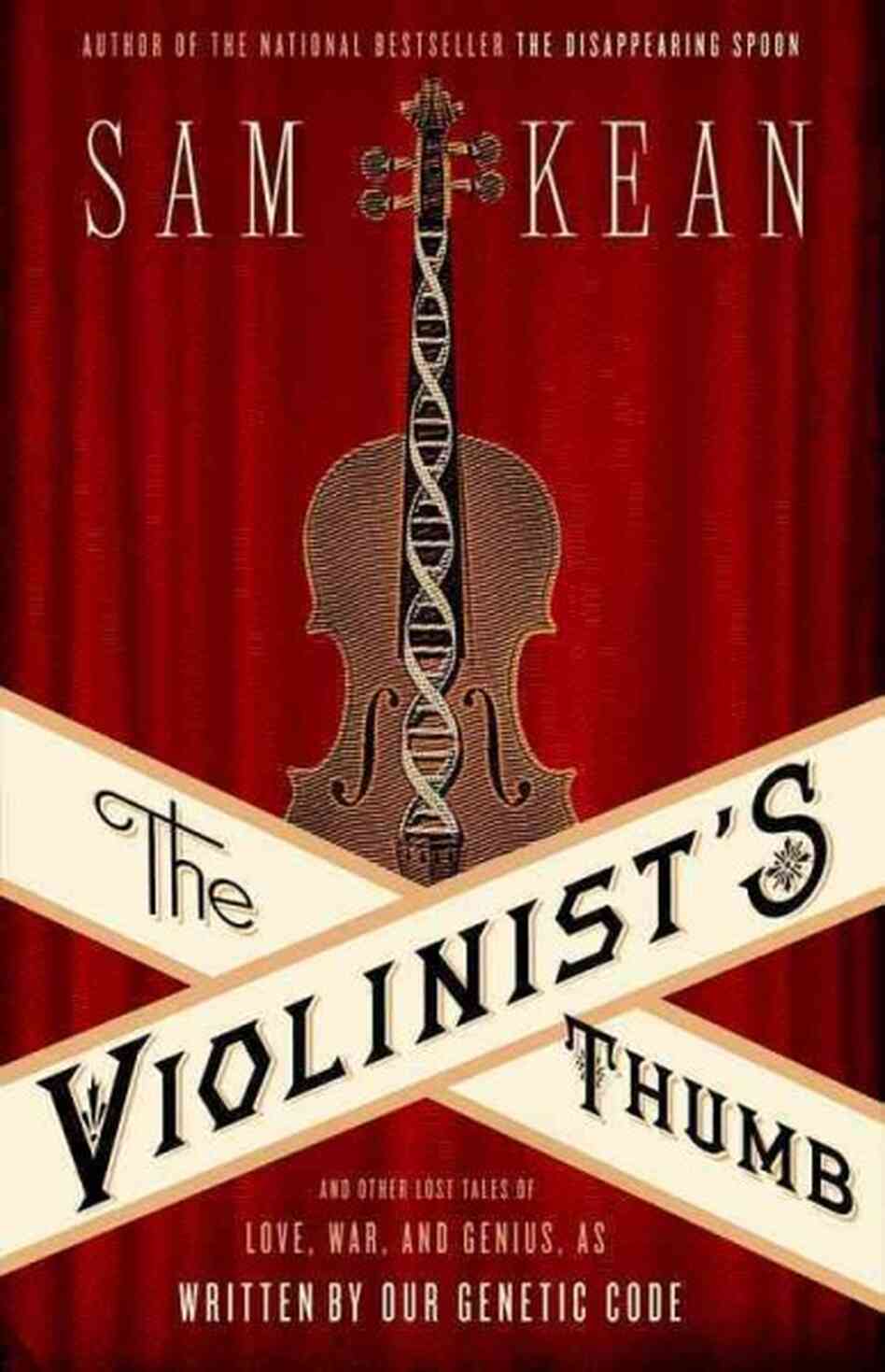 Because I enjoyed Sam Kean's Disappearing Spoon, I was excited to start the Violinist's Thumb. This book did not disappoint. I have to admit that I finished this book some time ago and now it is really overdue at the library. Thus, I present some rather unconnected thoughts.
Because I enjoyed Sam Kean's Disappearing Spoon, I was excited to start the Violinist's Thumb. This book did not disappoint. I have to admit that I finished this book some time ago and now it is really overdue at the library. Thus, I present some rather unconnected thoughts.Much like The Disappearing Spoon, this book has lots of fascinating stories. There were several parts of the book that really stuck with me. By far, my favorite was the history of the discovery of DNA. Kean discusses the story of Watson and Crick and all the good stuff (e.g., infighting, competition, and other assorted nastiness) you may have read or seen in The Double Helix, but the book also delves into some other very interesting characters that had major roles in unraveling the function and structure of DNA. One of the many things I loved about being in the lab was the plethora of unusual people that are attracted to that particular line of work. The lab of Thomas Hunt Morgan at Columbia around 1907 certainly attracted its fair share. The so-called "Fly Room" was a very small space with many large personalities that bred fruit flies as well as revolutionary science. Eventually, Morgan's lab lead to major contributions towards our understanding about mutations and heredity as well as sex-linked traits. Of course, his other contribution was the introduction of the fruit fly as a model organism.
The book also focuses on several other important scientists who were integral to our understanding to DNA and inheritance. These scientists included Sister Miriam Michael Stimson, who (like Gregor Mendel) performed science while in service to the church, Lynn Margulis and Barbara McClintock. This chapter, entitled "DNA Vindication", was centered on the important findings that each of these women made. This chapter was also very character-driven; each of these scientists was very much about going against the grain. In the end, I found these stories to be insightful not just about the results, but also about the restrictions on and expectations of women in science. I was glad that not only Rosalind Franklin (the Sylvia Plath of molecular biology) got coverage here!
Sam Kean has talked about several of the stories in this book on the Radiolab podcast. In the episode entitled Double Blasted, we hear the story of a man who was present in both Hiroshima and Nagasaki when the atomic bombs were dropped. In the episode Inheritance, he discusses some spurious results with midwife toads that led to the downfall of the scientist behind the work, Paul Kammerer. In the same episode, they discuss some really interesting stories about epigenetic modifications, which has completely changed the way we look at genetics. Now it is no longer simply what genes you are passing down to your child. Rather, it can also be about the environmental effects that your ancestors experienced generations ago.
Here are some other highlights:
- The titular story concerns the violinist Paganini, who was allegedly blessed/cursed with a rare joint disease that allowed him to have much great flexibility in this fingers. This allowed him to accomplish feats that other violinists would deem impossible.
- The chapter about post-mortem diagnosis of historical figures is quite good. There were lots of great stories about the possible genetic disorders of Toulouse-Lautrec, King Tut, and Abraham Lincoln. I had never heard before that John F. Kennedy had Addison's Disease, a condition of the adrenal glands that depletes the body of cortisol. One common side effect of Addison's is the bronze skin, which served JFK well in his debate against the pasty Dick Nixon in 1960.
No comments:
Post a Comment
Note: Only a member of this blog may post a comment.